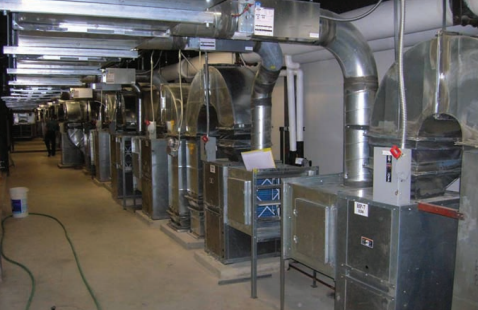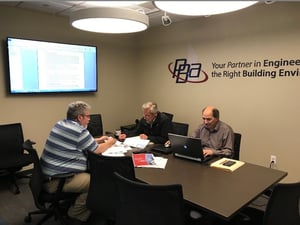
In this blog, we list key strategies that can help make older buildings become more sustainable while also preserving the character and design of the structure.
Before installing new equipment, or making upgrades to enhance an older building, owners and facility managers should first consider performing an energy audit to determine if existing systems are operating at optimum levels.
 There could be several contributing factors, or a single issue, preventing your system from operating at maximum efficiency. Faulty or disabled sensors, wiring issues, leaks in machinery, or even clogged or dirty filters can cause problems for owners. Facility managers must be capable of properly operating the equipment. A solid grasp of the equipment is essential to minimizing maintenance costs and inefficiency. MEP consulting engineers can identify opportunities for improvement in all areas including a building’s water systems, which can have energy costs if they leak or operate inefficiently.
There could be several contributing factors, or a single issue, preventing your system from operating at maximum efficiency. Faulty or disabled sensors, wiring issues, leaks in machinery, or even clogged or dirty filters can cause problems for owners. Facility managers must be capable of properly operating the equipment. A solid grasp of the equipment is essential to minimizing maintenance costs and inefficiency. MEP consulting engineers can identify opportunities for improvement in all areas including a building’s water systems, which can have energy costs if they leak or operate inefficiently.
Upgrades to heating, ventilation, and air conditioning systems that include making use of natural ventilation and heat sources are beneficial to minimizing energy loss. In conventional systems, integrating new efficient technologies into HVAC operations help to make HVAC systems more effective.
The design process should give careful consideration and planning when installing new equipment in older historic buildings that are being brought up to code with intent on preserving the aesthetics of the building. A well-planned and executed energy conservation strategy can push buildings to achieve greater HVAC efficiency while, complementing the theme of neighborhood mainstays.
Heat loss and gain caused by differentials in interior and exterior temperatures is greatest at the top of a building. Insulating the building envelope can provide noticeable energy savings and have an even greater effect on older buildings. Adding insulation to unfinished attic spaces is generally simple and causes minimal disruption to a building’s historic features.
Wall insulation throughout your building can improve its thermal efficiency however, it could negatively impact historic features and timeless design.
In addition to upgrading HVAC system components, building owners and operation managers can recognize greater levels of energy efficiency and costs by upgrading other equipment. High-efficiency water heaters use far less energy than older models and could move the needle on saving on energy costs in the long run.
Upgrading appliances like old refrigerators and dishwashers to newer models with less power consumption will reduce electricity use and lessen indoor heating and cooling loads.
Operations managers and building owners can add environmentally friendly and cost-effective energy materials that are readily available and require minimal structural changes. Solar panels can be installed with limited or no visibility at all. Geothermal systems require less equipment space, have fewer moving parts, and in some cases be used as upgrades to traditional HVAC systems.
PBA has a dedicated Controls Group comprised of fantastic mechanical and electrical design engineers to help sort out and coordinate all control requirements of new or existing units overall building design to achieve optimal thermal comfort and client-specific energy efficiency goals.
PBA is “Your Partner in Engineering the Right Building Environment.”
These Stories on MEP